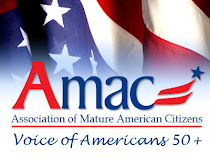Thursday, January 31, 2019
ARTICLE - "OPIOID OVERDOSE EPIDEMIC SWEEPS U.S."
OPIOID OVERDOSE EPIDEMIC SWEEPS U.S.
By Ty Bollinger
The Truth About Cancer web site
Below is an excerpt from the article. To read the article in its entirety, click on the link below:
(https://thetruthaboutcancer.com/opioid-overdose-epidemic/?utm_campaign&utm_medium=organic&utm_source=fb-ttac&utm_content=opioid-overdose-epidemic&a_aid=59c13831797bc&u1=fbttacopioidoverdose&fbclid=IwAR2JsRxYAhO6xASVAatNi3yIY96YM4SEPoqA4zhInXycgzMKSKEgatpnDpw)
A new report
has found that, for the first time, Americans are more likely to die of
an opioid overdose than a car accident. The increase is directly and
significantly associated with marketing efforts of the pharmaceutical
industry.
As the truth begins to surface, pharma execs are finally
being put on trial for their contributions to one of our nation’s
greatest health crises in a generation.
More
than 100 people die every day from an accidental opioid overdose, and
40% of those deaths are from prescription painkillers. But prescription
opioid drugs are responsible for the vast majority of these deaths since
most people become addicted to prescription drugs before transitioning
to more illicit opioids like heroin and fentanyl.
Companies like Purdue Pharma,
the creators of OxyContin, have been charged with misleading doctors
regarding the dangers of these powerful painkillers, but that hasn’t
stopped the industry from aggressively marketing highly addictive opioid
drugs to doctors all over the country.
In 2011, NPR published an
article about addiction to Oxycodone, one of the most common opioid
prescriptions in the United States. Florida doctors prescribed 10 times
more oxycodone than the rest of the country combined. Over the past 10
years, a West Virginia town with just over 3,000 residents has been
flooded with opioid drugs – over 21 million, to be precise. That’s about 6,500 pills for each resident.
A
2014 survey by the Substance Abuse and Medical Health Services
Administration found that there are over 4 million non medical
painkiller users. In fact, over 10% of Americans had used an illicit
drug within 30 days of the survey.
And those trends have only increased in recent years. In 2017, 47,600 people died from an accidental opioid overdose, almost double the numbers from 2010.
The
problem has become so bad that Americans have a 1 in 96 chance of dying
by accidental opioid overdose. Those are higher odds than deaths from
car accidents, falls, gun assaults, drowning, or fires. Opioid overdose
is now the number one cause of accidental death in the nation. Life
expectancy has declined in recent years, due to a spike in preventable
deaths, like overdosing.
This flood of addictive drugs over the past decade was dispersed not by shady drug dealers, but by licensed physicians
who wrote prescriptions at an alarming rate. In 2017, there were more
than 58 opioid prescriptions for every 100 Americans. And that’s almost
20% less than it was just a decade ago. From 2008 to 2012, doctors wrote
more than 80 opioid prescriptions for every 100 Americans.
The
pharmaceutical companies profiting from these drugs and the regulatory
bodies responsible for them have utterly failed us. And after years of
pumping prescription poison into every corner of the nation, the use of
illicit drugs has skyrocketed. It is not an overreaction when I tell you
that the opioid crisis is a national catastrophe. And like most catastrophes stemming from the pharmaceutical industry, it’s been fueled by greed.
Pharmaceutical
companies have long been accused of deceptive marketing tactics.
They’ve spent billions of dollars on direct marketing to physicians.
About 3 of every 4 doctors have financial ties to big pharma, receiving
money, meals, consulting fees, and other gifts from drug reps. I
reported a few months ago about an orthopedic surgeon who received
nearly $2,000,000 from companies who manufacture hip and knee
replacements.
There’s little doubt that the billions of dollars
that pharmaceutical reps spend on physician marketing has a significant
influence on doctor behavior.
These companies have also been accused over and over again of misleading doctors. Since the introduction of OxyContin,
doctors have been repeatedly told that the drug is safe and effective,
despite overwhelming scientific evidence that says otherwise.
But
until now, there have been no studies that clearly show a connection
between pharmaceutical marketing and the opioid epidemic.
That’s all changed. [continue reading at this link: https://thetruthaboutcancer.com/opioid-overdose-epidemic/?utm_campaign&utm_medium=organic&utm_source=fb-ttac&utm_content=opioid-overdose-epidemic&a_aid=59c13831797bc&u1=fbttacopioidoverdose&fbclid=IwAR2JsRxYAhO6xASVAatNi3yIY96YM4SEPoqA4zhInXycgzMKSKEgatpnDpw ]
Subscribe to:
Post Comments (Atom)

.png)


No comments:
Post a Comment